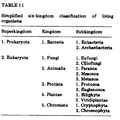Thomas Cavalier-Smith
Thomas Cavalier-Smith (1942 – 2021) was a prominent British biologist and professor known for his extensive work in the field of cell biology, evolutionary biology, and taxonomy. His research significantly contributed to the understanding of the tree of life and the classification of eukaryotes. Cavalier-Smith proposed several taxonomic revisions and introduced new kingdoms in the classification of life, making his work a cornerstone in modern biology.
Biography
Thomas Cavalier-Smith was born in 1942 in London, England. He pursued his education at the University of Oxford, where he later became a professor and led numerous research projects. Throughout his career, Cavalier-Smith was dedicated to exploring the complexities of life's diversity and the evolutionary relationships among organisms. His contributions to science were recognized with several awards, including being elected a Fellow of the Royal Society.
Scientific Contributions
Cavalier-Smith's work is best known for its impact on the understanding of the evolutionary history and classification of eukaryotes. He proposed a detailed framework for the tree of life that included the introduction of new kingdoms such as the Chromista and Protozoa, alongside the refinement of existing classifications. His theories often sparked debate and further research, contributing to the dynamic nature of evolutionary biology.
Key Concepts
- Eukaryote Classification: Cavalier-Smith made significant revisions to the classification of eukaryotes, organizing them into distinct kingdoms based on cellular structure, genetics, and evolutionary history.
- Tree of Life: He developed a comprehensive model of the tree of life, emphasizing the evolutionary relationships between different organisms and proposing new branches and classifications.
- Endosymbiotic Theory: Cavalier-Smith contributed to the development of the endosymbiotic theory, which explains the origin of eukaryotic cells from prokaryotic organisms.
Legacy
Thomas Cavalier-Smith's legacy in the field of biology is marked by his innovative approach to taxonomy and evolutionary biology. His theories and classifications have shaped current understanding and continue to influence research in these areas. Despite the controversy that some of his proposals generated, his work is a testament to the importance of challenging established ideas and exploring new perspectives in science.
Selected Publications
Cavalier-Smith published extensively throughout his career. Some of his notable works include:
- Principles of Protein and Lipid Targeting in Secondary Symbiogenesis: Euglenoid, Dinoflagellate, and Sporozoan Plastid Origins and the Eukaryote Family Tree (2000)
- The Kingdoms of Organisms (2004)
- Eukaryote Kingdoms: Seven or Nine? (1998)
See Also
References
Thomas Cavalier-Smith
Transform your life with W8MD's budget GLP-1 injections from $125.
W8MD offers a medical weight loss program to lose weight in Philadelphia. Our physician-supervised medical weight loss provides:
- Most insurances accepted or discounted self-pay rates. We will obtain insurance prior authorizations if needed.
- Generic GLP1 weight loss injections from $125 for the starting dose.
- Also offer prescription weight loss medications including Phentermine, Qsymia, Diethylpropion, Contrave etc.
NYC weight loss doctor appointments
Start your NYC weight loss journey today at our NYC medical weight loss and Philadelphia medical weight loss clinics.
- Call 718-946-5500 to lose weight in NYC or for medical weight loss in Philadelphia 215-676-2334.
- Tags:NYC medical weight loss, Philadelphia lose weight Zepbound NYC, Budget GLP1 weight loss injections, Wegovy Philadelphia, Wegovy NYC, Philadelphia medical weight loss, Brookly weight loss and Wegovy NYC
|
WikiMD's Wellness Encyclopedia |
| Let Food Be Thy Medicine Medicine Thy Food - Hippocrates |
Medical Disclaimer: WikiMD is not a substitute for professional medical advice. The information on WikiMD is provided as an information resource only, may be incorrect, outdated or misleading, and is not to be used or relied on for any diagnostic or treatment purposes. Please consult your health care provider before making any healthcare decisions or for guidance about a specific medical condition. WikiMD expressly disclaims responsibility, and shall have no liability, for any damages, loss, injury, or liability whatsoever suffered as a result of your reliance on the information contained in this site. By visiting this site you agree to the foregoing terms and conditions, which may from time to time be changed or supplemented by WikiMD. If you do not agree to the foregoing terms and conditions, you should not enter or use this site. See full disclaimer.
Credits:Most images are courtesy of Wikimedia commons, and templates, categories Wikipedia, licensed under CC BY SA or similar.
Contributors: Prab R. Tumpati, MD



